When Chinese food comes to mind, you may think of salty and savory, saucy dishes, fluffy rice, noodles, and of course, fortune cookies. Chinese food is often synonymous with take-out and delivery and is not usually thought of as being the healthiest meal. However, while there are plenty of ways to pack calories, fat grams, and sodium into a Chinese food meal, I have several tips to turn your take-out order into a health-conscious meal.
Restaurants are notorious for serving meals with high calorie counts. By using more oil and butter in cooking than what’s often used in home cooking and offering numerous fried options, it’s no wonder you can easily find dishes exceeding 1,000 calories. Chinese food is no exception, and you’ll also find this food is loaded with sodium and even sugar, especially in the saucier dishes, due to using particularly salty ingredients like soy sauce. While you can healthfully enjoy higher-calorie foods and be less cautious of sodium and sugar occasionally, if you eat Chinese food on a regular basis, you should be aware of how to order healthier meals.
High sodium intake can contribute to serious health conditions, like high blood pressure, heart attack, and stroke, and high calorie counts can make weight management more challenging. When you stay mindful of these two factors, you can reduce your health risk while still eating foods you enjoy. While each Chinese restaurant is different, and establishments make classic dishes differently, there are a few simple guidelines for ordering healthier at a Chinese restaurant.
Read on the learn what I order at a Chinese restaurant as a dietitian, and for more, don’t miss How to Lose Weight While Eating At McDonald’s.
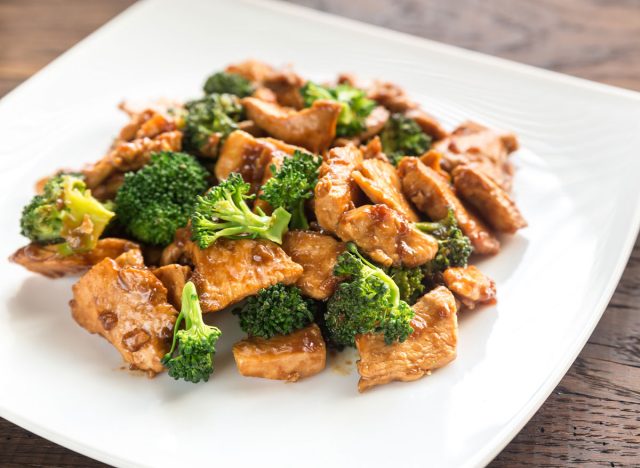

I know, this may sound like it eliminates many popular menu items at your favorite Chinese restaurant, but I promise to introduce you to plenty of delicious non-fried options. Spring rolls, sweet and sour pork, and sesame chicken are some of the popular fried items on a Chinese menu. We can agree these staples are delicious, but the calories and grams of fat in these dishes rack up quickly.
Next time you eat Chinese food, skip the fried options. This can save numerous calories and grams of fat and saturated fat, leaving you with a healthier dish. When looking for non-fried menu items, “stir-fry” is a good cooking method to look for. While this will still incorporate oil into the preparation, you’ll avoid the batter and excess oil associated with deep frying. You can also look for baked, steamed, sauteed, and boiled dishes as healthier alternatives to fried options.
You’ll find many of the same offerings on Chinese menus across the country. Here are some non-fried entrees to consider:
- Chicken and broccoli
- Moo goo gai pan
- Shrimp with vegetables in black bean sauce
- Chop suey
- Baked salmon
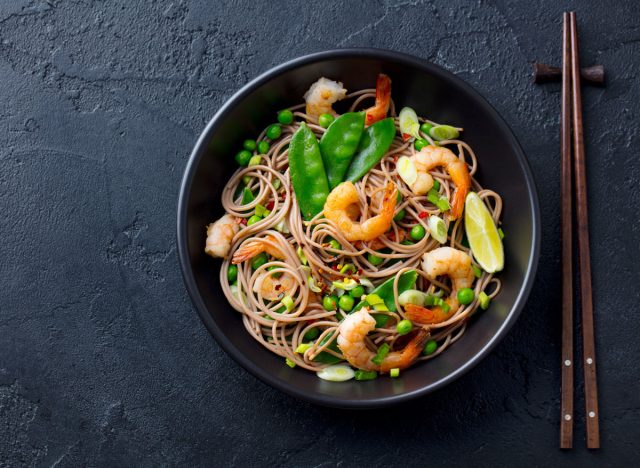

With so many saucy dishes on most Chinese menus, this tip will take diligence in ordering. Sauce can pack a surprising number of calories, and is also a source of sodium and added sugar. Limiting or skipping sauce in your meal can make a huge difference in its nutritional value. When ordering, you can ask for “light sauce” to reduce the calories and worrisome nutrients in your meal. Even better, ask for the sauce on the side so you can control how much you eat.
READ RELATED: What Diet And Nutrition Must Men Follow For Excellent Fertility Health?
Thicker, stickier sauces like sweet and sour and sesame are going to be very calorie-dense, so limit those as much as possible. Stir fry sauce, however, is largely made up of soy sauce, making it a much lower-calorie option. Speaking of soy sauce, if you are adding some to a dish, choose the lower-sodium option. While this can still pack a significant amount of salt into your day, but it is an improvement compared to regular soy sauce.
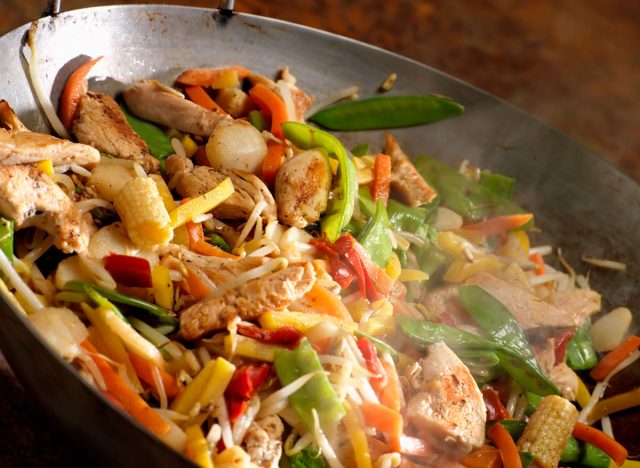

No matter which dish you choose, always ask for additional vegetables. This is a great way to add tons of volume to your meal, leading to a larger, more filling dish. Vegetables are a great source of fiber, vitamins, and minerals, and are naturally low in calories. By filling up on veggies, you’ll be less likely to overeat more calorie-dense and less nutritious ingredients in your meal.
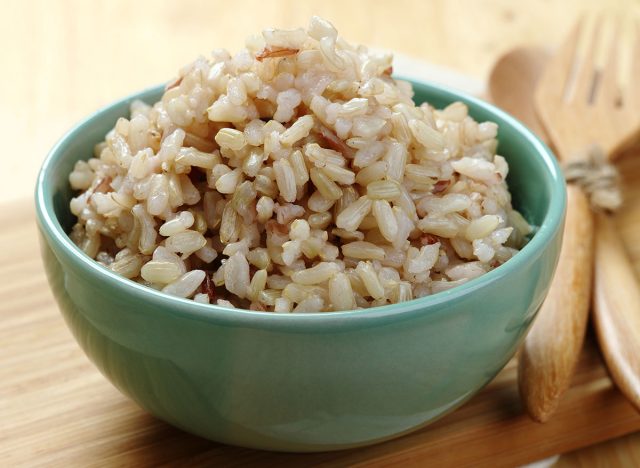

Nearly all Chinese dishes will come along with carb sources, rice and noodles being the most popular options. But, don’t forget other popular options, like dumplings and spring rolls contain carb-dense ingredients, too. To build a healthier Chinese meal, go with brown rice over white or fried rice. This will incorporate more fiber into your meal, allowing it to be more filling. If you go with a noodle dish for your entrée, make sure to watch your portion. There typically aren’t healthier noodle alternatives to choose from, so your best bet is to manage your portion in an effort to have a healthier meal.
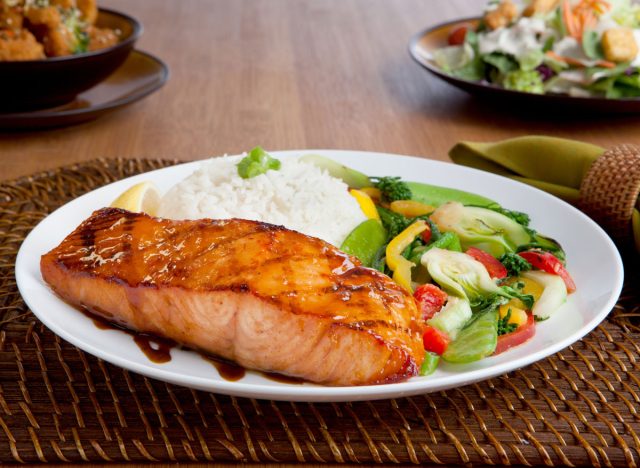

When building a healthier Chinese meal, your order should look something like this: A non-fried lean protein (chicken or fish), a higher fiber carb (brown rice), and loads of vegetables. If you can follow this guideline, you’ll be on your way to a mindful meal.
A bit of good news: a single fortune cookie provides only 30 calories and fewer than 4 grams of sugar, making it a reasonable treat in which to end your meal!
Melissa Rifkin, MS, RDN, CDN










